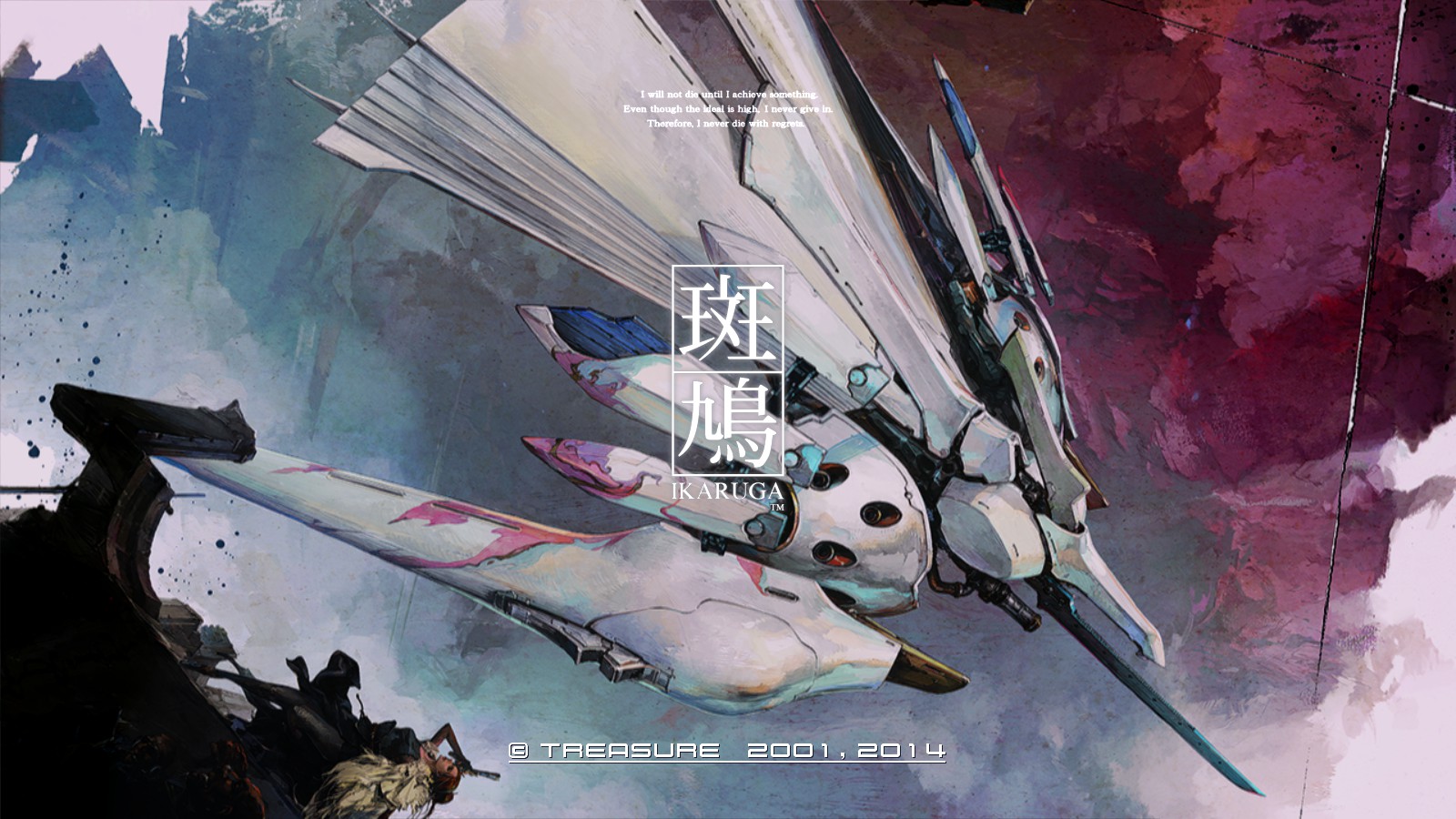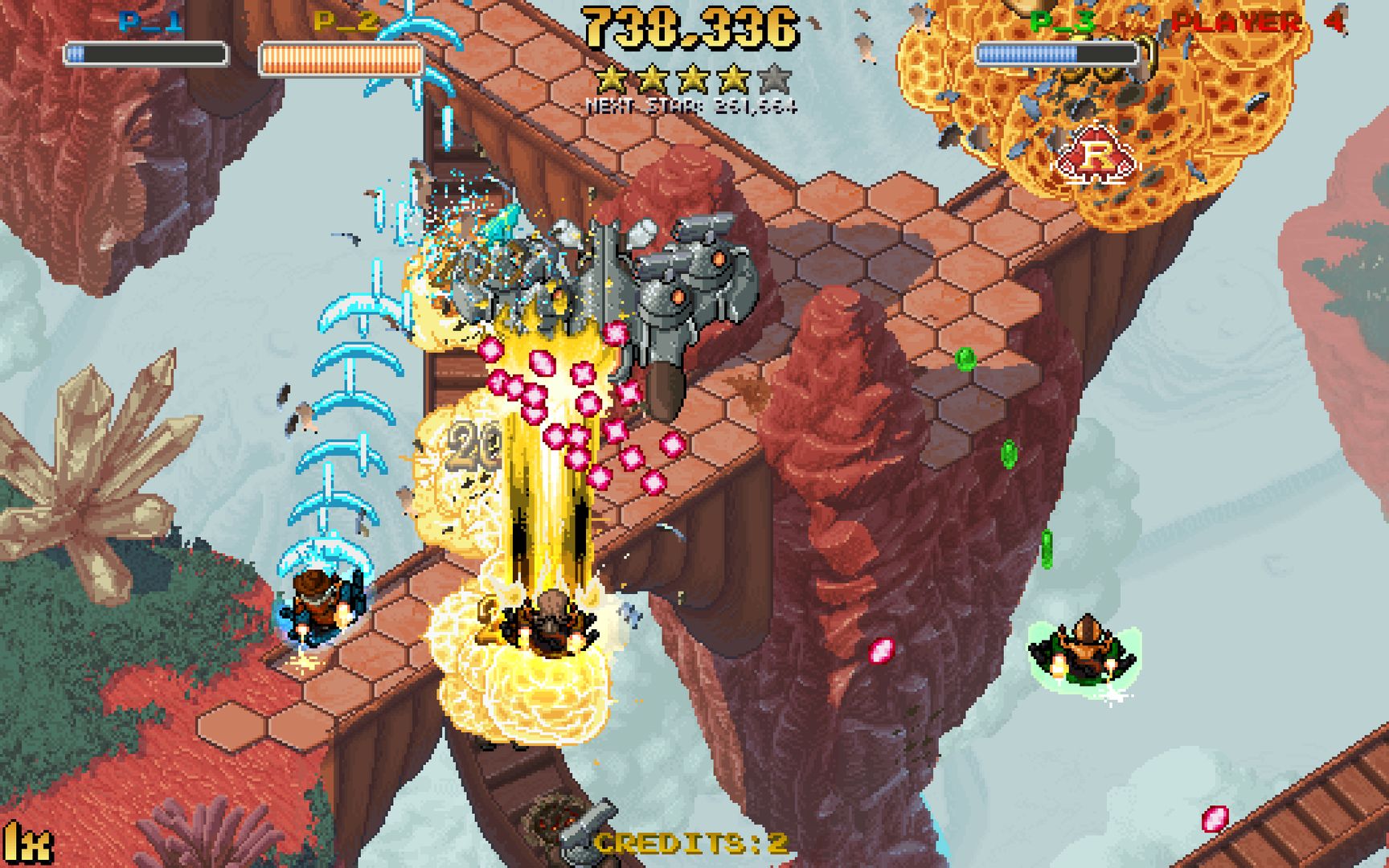How Steam brought shmups out of arcades and into a new PC renaissance
How Steam and passionate fans pulled shoot-em-ups out of exile in Japanese arcades and back into the limelight.

By the late ‘90s, with Street Fighter 2’s impact on arcades receding in the West, the beautiful rows of wooden cabinets and the glow of their CRTs suffered a commercial deforestation. With their dwindling ranks went the heyday for genres built around a quick play and immediate gratification. Genres like the shoot-em-up, which predates all the rest with links back to 1962’s pioneering Spacewar!
In its prime, the shoot-em-up genre swelled with a distinctly Japanese form of game design, screens covered by hellish bullet patterns and anime girls—plus notable domestic off-shoots. Post-arcade, the shoot-em-up, the shooter, the shmup, or the STG (pick your acronym preference) receded into an enthusiast bubble, hidden from view after first and third-person action games captured the designation of 'shooter.'
In those dark years, shmup enthusiasts either contended with pricey, obscure late releases on the Dreamcast and Neo Geo, or by sheer will, discovered alternate venues, corners of the internet where potential classics like the enemy pile-on Cho Ren Sha resided prior to common digital distribution and Steam.
"I found an online resource of Japanese people, just basement devs, who would be posting shmups and posting updates every day online. Some of them were crap. Some of them were unbelievably cool," remembered Don Thacker, founder of Imagos Softworks, developers of the Kickstarted genre cross-over Starr Mazer.

Shoot-em-ups have a language all their own. Here are some words you'll want to know.
Fixed: Any shooter where movement is locked to a single restricted axis. Think Galaga, think Space Invaders.
Vertical/horizontal/isometric: Shmups define themselves by their direction. Some games mix types.
Bullet Hell: A genre defined by enemy bullet patterns with few safe spaces. Also referred to by its Japanese designation, danmaku.
Traditional: There’s a communal debate about the exact term, but traditional refers to shmups styled like those prior to the advent of bullet hell. Less intense.
Touhou: Referring to a long standing series of Japanese PC shmups which stretch into additional media.
Doujin shmup: Japanese hobbyist titles, a predecessor to the modern indie scene which still carries on today.
Tate Mode: Turn your display vertical to match the aspect ratio of vertical shmups and you’re in Tate mode.
Discovery comes easy when wandering a hall of video games, each churning attract screens. Without arcades, those random hubs found by curious Google hunters such as Thacker were it for the shmup’s exposure, outside of certain studios aiming at the die-hard audience. The genre, and with it the shmup’s myriad of sci-fi, fantasy, and military fetishism, fell into disrepair. The mainstream gaming public chewed on ever increasing polygon counts; the dedicated shmup fan sifted through what amounted to back alley digital dumpsters seeking anything of merit still made with scrappy 2D sprites, subwoofer crushing explosions, and mountainous end level bosses.
Then, a visible indie game movement, and more so, Steam. Consider the timing as the calendar turned to the 2010s: Kids who mastered joystick controls in front of CRTs burning phosphors, expertly navigating games at the height of shmup popularity—from Namco’s ageless Galaga to Capcom’s beautifully exaggerated, WWII "inspired" 194X series—plug into their nostalgia as developers. Thus a flurry of Steam activity, sizable enough to wear down even the hardened genre devotees, but also a sign of regeneration and visibility.
Now developers like Mommy’s Best Games, developer of the neon obsessed heavy metal shmup Shoot 1UP, can find a home for their uniquely textured throwbacks.
"Steam has been great to release Shoot 1UP to, as it was very successful on Xbox 360 and now we can reach even more people. I love consoles but not everyone has one. With PCs, nearly every gamer has a machine that can run our 1990s style shooters," said Nathan Fouts of Mommy’s Best Games.
The biggest gaming news, reviews and hardware deals
Keep up to date with the most important stories and the best deals, as picked by the PC Gamer team.
It’s a gold rush on Steam compared to the genre’s low point. The service afforded a substantial kick to the shmup, which at the turn of the decade saw a fleet of indies in such numbers, Don Thacker amusingly stated that for developers, "Steam is bullet hell."

The slow resurgence
Throughout the early 2000s, a few notable studios entered the space, some earning wide acclaim, including Treasure’s polarity swapping Ikaruga (no article on shmups is free from Ikaruga’s notable grasp). Aside from Treasure, popular Japanese developer Psikyo (notable for their raucous Strikers 1945 and the perky, daydream-like Gunbird) died off by 2003, vacating the space. Enter Japanese developer Cave.
Founded in 1994 but finding their footing as Psikyo neared shutdown, Cave’s numerous early entries include tongue twisting titles DoDonPachi, Espagaluda, and Guwange, the latter boasting a genre-exotic medieval Japan setting. Further efforts in the later 2000s brought on bullets in droves from Mushihimesama, Espagaluda II, and Deathsmiles, the latter fitted with anime witches and anime fantasy and anime tropes to saturated extremes. Each of Cave’s entries fell into a contemporary sub-genre affectionately coined 'bullet hell,' partly unsurprising since the studio’s formation is owed to former employees of the bankrupt Toaplan, arguably where the designation came from following Toaplan’s sci-fi dazzler Batsugun.
Bullet hell came to define the zest of a shmup, balancing an elegant ballet of colored weaponry and a playable protagonist with a single weak point, mere pixels (or even pixel) wide. They’re peak shmup, where pressure-driven, graceful movement meets a handsome (and ceaseless) display of enemy attack patterns. Steam is full of these gripping yet punishing games, including a back library of Cave’s work.
"There's a strong support for Cave and the bullet hell genre itself… The shooting game developers catered more to a dwindling audience who were demanding harder and harder games," noted James Wragg, Director of Publishing at Degica, responsible for bringing some of those Cave classics to Steam.
"Steam fills that gap and enables companies. They don't need to go through a publisher like us. They can publish independently," began Wragg. "It basically allows them to publish without all of the red tape of the platforms like PlayStation, Xbox, Nintendo. In theory, it opens it up to a much wider audience because Steam's got such a huge user base."
"It's very encouraging to see a lot of indie circles start to release stuff on Steam. Back in my day, you wouldn't see that. But now you're seeing stuff like Crimzon Clover [and] Mecha Ritz [Steel Rondo]," said Danny 'danbo' Baxter of Stellar Circle, developer of 2016’s Blue Revolver, a suitably low-fi gem owing much to Cave’s turn-of-the-century design philosophy.
Influenced
Nostalgic influence feeds the listings on Steam, cultivating a collection of shmups which hit every classification in a varied genre—vertical, horizontal, traditional, even twin stick (although the hardcore community may find the inclusion dubious). Shmups even interject themselves elsewhere.
"If you click the bullet hell tab on Steam, you'll see a lot of games that bear no resemblance to something that I've been playing. Undertale had bullet patterns, Neir Automata is going to have them," said danbo a few weeks before Nier's release.
The rush of games—and those borrowing elements—has caused a touch of in-fighting between those passionate for the striking difficulty of bullet hell and those seeking something more passive. Like Degica’s Dariusburst, the continuation of a decades old franchise set in deep space as players set ablaze robotic, oceanic inspired creatures. In a genre of familiar routines, Darius is (and forgive the pun) in a sea of its own.
"There's a certain generation where their first encounter with shooting games was bullet hell. For them, bullet hell equals shooting games. We came across this when we released Dariusburst. Some of the reviews from users saying there's not enough bullets on screen, but it's like comparing Virtua Fighter to Street Fighter," said Wragg, noting the wide separation in shmup styles.
Steaming
Paging the community on hangout Shmupsforum, users expressed dismay surrounding imperfect ports, brought up fandom punching bag Sine Mora for a laugh, and tossed positive sentiments at the modern accessibility of the genre. "The recent deluge of shmups on Steam has been a great thing… The genre is finding a wider audience and there have been some great indie efforts. Shmups are alive and kicking and I hope it continues forever," noted one user.
"At the same time, especially in recent years, it also allows for a boatload of shovelware to gum up the works," countered one forum regular.
As with Steam in general, the visibility problem grows with each new game added to the service. "I think Steam is brilliant at making things accessible. I also think Steam added more games last year than Steam had previous," stated Thacker. "If you look at our little pie slice on Steam and you fill it 80% with Cave games, I think it's going to be hard for us to have the discussion about a genre a lot of indies are trying to put back together."
Wragg, however, welcomed the influx. "I'm happy to see competition in the market because competition is good for everybody. It makes people push harder and I'd rather see the shooting genre go somewhere other than just bullet hell and have somebody come up with crazy mechanics that push things in other directions. The only way that can happen is through new people with new ideas coming in."
I'd rather see the shooting genre go somewhere other than just bullet hell and have somebody come up with crazy mechanics that push things in other directions.
James Wragg
Bullet hell continues to dominate on Steam. Of the 15 pages of games listing themselves under shoot-em-up, nearly half pin themselves to bullet hell. "There's definitely a lot of games you could play, but I'm not sure how many of those are really geared to getting people into games like bullet hell," said danbo.
"For the beginner coming in, it is a very difficult place to start. But Steam again on that front allows people to, without much of a financial investment, pick up couple of shooting games in the sale or a couple of really well priced indies," said Wragg.
Games like Thacker’s gorgeous Starr Mazer, mixing horizontal shooting and point-and-click gameplay, come pre-designed for entry level play. "I've had 45, 50 year old guys come up and they'll be like, 'Oh, it's Galaga.' It's super not, but I understand that's all you can link it to so let's use that as a stepping stone."
Those looking to jump in on Steam might be turned away by Cave’s kinetic, even exuberant style, but can find solace elsewhere. "[Jamestown is] pretty simple to pick up. You can sit around with two, three, four players locally, enjoy it with your friends and the mechanics work very well for multiple players," said Wragg. He’s right: Jamestown’s friendly H.G. Wells-meets-American-Western aesthetic marries to a charming entry level pixel adventure without being first baptized by Cave.
If nothing else, the genre remains alive, and in good hands. The indie surge brought on by Steam, for its inevitable faults in saturation, allows developers to find a home. “If you haven't gone to the shmup section on Steam, check out some indies. You're missing a lot," began Thacker. "Also if you grew up in the ‘80s and ‘90s and you liked shmups, they're there. They exist. It didn't go away with arcades. They survived."
And Steam certainly helped.

